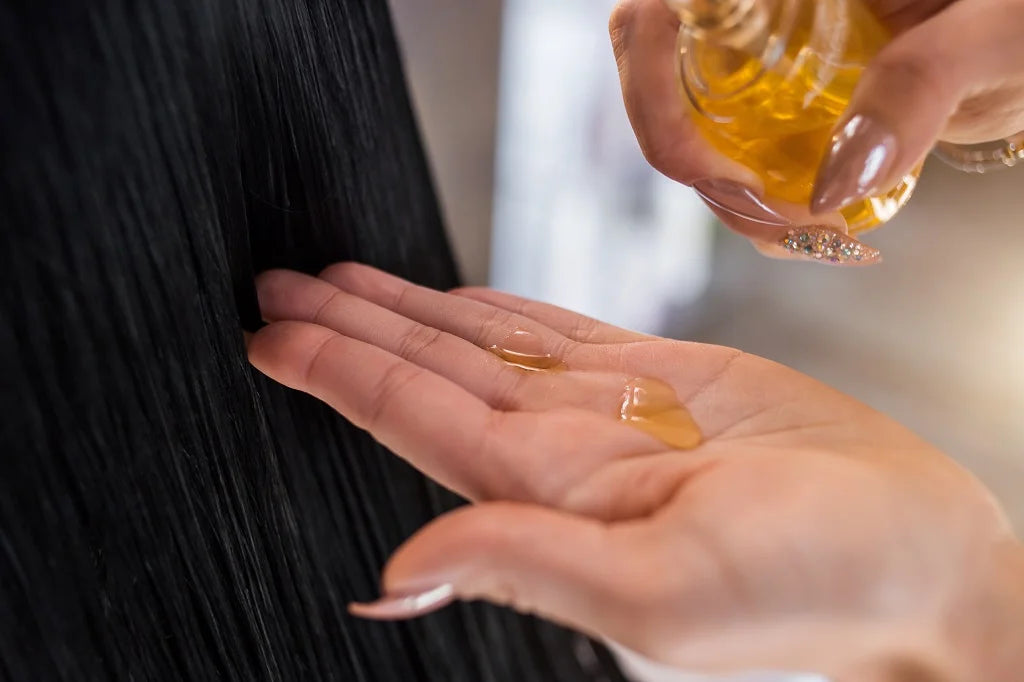How To Make Rosemary Oil For Hair - Expert Answers
Understanding Rosemary Oil and Hair Growth
Rosemary essential oil is a concentrated extract from the leaves of Rosmarinus officinalis, prized for its antioxidant, anti‑inflammatory, and antimicrobial properties that may support scalp health and hair follicle function. Historically used in Mediterranean folk medicine for wound healing and circulation enhancement, rosemary’s key constituents include carnosic acid, rosmarinic acid, and essential volatile terpenes such as 1,8‑cineole .
Some studies suggest rosemary oil may rival conventional hair‑growth medications. A landmark 2015 randomized trial found that topical rosemary oil was as effective as 2% minoxidil in improving hair count over six months, with the added benefit of reducing scalp itching . A 2023 mouse study further demonstrated that a 1% rosemary oil lotion stimulated greater hair shaft length and weight compared to minoxidil, although human trials remain limited .
The Science Behind Rosemary Oil
Bioactive Compounds
The hair‑supportive effects of rosemary oil are attributed to several bioactive components:
Carnosic Acid & Rosmarinic Acid: Potent antioxidants that combat oxidative stress in scalp tissues, protecting follicles from premature aging .
1,8‑Cineole (Eucalyptol): A terpene known to enhance scalp microcirculation, delivering oxygen and nutrients to hair bulbs for healthier growth .
Anti‑Inflammatory Agents: Compounds that reduce inflammatory cytokines in the scalp, potentially alleviating conditions like seborrheic dermatitis and dandruff .
Clinical Evidence
2015 Androgenic Alopecia Trial: Compared rosemary oil to minoxidil in 100 participants; both groups saw similar hair‑count increases after six months, but the rosemary group reported less scalp irritation .
2023 Murine Study: Mice treated with a 1% rosemary oil formulation exhibited significant improvements in hair length, weight, and density versus minoxidil controls .
2016 Rat Model: Rosemary extract improved blood flow and skin health, suggesting potential for preventing follicle miniaturization in humans .
While promising, more large‑scale human trials are needed. For an overview of existing research, consult PubMed’s summary of the 2015 trial on rosemary oil vs. minoxidil .
How to Choose Quality Rosemary Oil
When shopping for rosemary essential oil, prioritize:
Pure, 100% Essential Oil: Avoid blends with synthetic fragrances or unnecessary additives .
Organic or Wild‑Harvested: Ensures minimal pesticide residue and higher potency of active compounds .
Steam‑Distilled: The gold standard extraction method that preserves delicate terpenes and antioxidants.
Third‑Party Testing: Look for GC‑MS (gas chromatography–mass spectrometry) certification to confirm chemical composition and purity.
For more on essential oil safety, see the National Association for Holistic Aromatherapy’s guidelines .
Preparing and Diluting Rosemary Oil
Because undiluted essential oils can irritate the scalp, always mix rosemary oil with a carrier oil or hair product:
Carrier Oils: Jojoba, coconut, argan, or sweet almond oil are popular choices.
Dilution Ratio: Aim for 2–5 drops of rosemary oil per teaspoon (5 mL) of carrier oil for routine use, increasing to 10 drops per ounce of shampoo or conditioner .
Patch Test: Apply a small diluted amount to the inner forearm or behind the ear. Wait 24 hours to check for redness or itching before full application .
Application Methods
1. Scalp Massage
Blend: Mix ~5 drops of rosemary oil with 1 tsp carrier oil.
Section Hair: Part hair into quadrants.
Apply: Drop oil blend directly onto the scalp.
Massage: Use fingertips or a soft scalp brush to massage for 3–5 minutes, stimulating circulation.
Leave‑On vs. Rinse: Leave on for at least 10 minutes, or overnight if tolerated, then shampoo as usual .
2. Add to Hair Products
Shampoo & Conditioner: Add 5–10 drops per ounce of product; shake well before use.
Hair Masks & Serums: Incorporate into DIY or store‑bought treatments for an extra growth boost .
3. Homemade Rosemary Shampoo
Combine baking soda, liquid castile soap, carrier oil, and rosemary oil to create a gentle, clarifying shampoo. Adjust the rosemary oil to 5–10 drops per ounce of base .
4. Overnight Leave‑In Treatment
Apply diluted rosemary oil at night, cover hair with a silk scarf or shower cap, and shampoo in the morning to minimize daytime greasiness.
Frequency and Duration
Daily Use: Safe when properly diluted; ideal for individuals with dry or coarse hair .
Every Other Day: Recommended for fine or oily hair to prevent heaviness and buildup .
Treatment Duration: Consistency is key—expect to use for at least 3–6 months to observe measurable improvements in hair density and thickness .
Potential Side Effects and Precautions
Scalp Irritation: Over‑concentration can cause redness, itching, or contact dermatitis; always dilute and patch‑test .
Pregnancy & Nursing: Limited safety data; consult a healthcare provider before use .
Allergies: Individuals allergic to Lamiaceae family (mint, basil, lavender) should use caution.
Eye Contact: Avoid the eye area; rinse immediately with water if contact occurs .
Combining Rosemary Oil with Other Treatments
Rosemary oil can complement:
Minoxidil: May enhance results, though clinical validation is lacking; consult a dermatologist before combining .
Biotin Supplements: Supports keratin production for stronger strands.
Peppermint Oil: Promotes additional circulation benefits; use a 50:50 blend with rosemary oil.
Scalp Microneedling: Tiny channels facilitate oil absorption; apply rosemary oil post‑microneedling for deeper penetration .
Tracking Your Progress
Hair Count Test: Mark a 1 cm² area, count shed hairs weekly to track reduction in fallout .
Photographic Record: Take standardized photos (same lighting and angle) monthly to visually document changes.
Scalp Health: Note reductions in dryness, flakiness, or inflammation over time.
Try Xiangxiang Daily Now!
We Help You Launch New Products, And Continue To Grow. Try Us With 20% Off Your First Order!
Q&A
Q: How do you use rosemary oil for hair growth?
A: Dilute 5 drops of rosemary oil in 1 tsp carrier oil, massage into scalp for 3–5 minutes, leave on 10 minutes–overnight, and rinse or shampoo as desired .
Q: Can I leave rosemary oil in my hair daily?
A: Yes, if properly diluted—ideal for dry/coarse hair. For fine hair, limit to every other day to avoid greasiness .
Q: Can I apply rosemary essential oil directly to hair?
A: Never use undiluted; always mix with a carrier oil or hair product to prevent scalp irritation and follicle damage.
Q: How long does rosemary oil take to grow hair?
A: Clinical studies observed visible improvements after 6 months of consistent use, though some users report subtle changes in 3 months .
Table of Contents
Latest Blog Posts
Check out the latest industry trends and take inspiration from our updated blogs, giving you a fresh insight to help boost your business.




